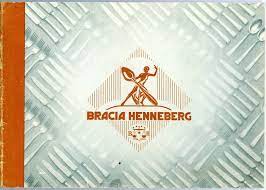


The Henneberg family arrived in Warsaw in the first half of the 19th century and quickly assimilated into Polish society. Master turner Julius Henneberg (born in 1835 in Dresden, died in 1907 in Warsaw) and Michał Czajkowski gained experience at a Warsaw plating factory founded by the Fraget brothers in 1824. In 1856, they opened their own company, producing plated tableware. The first workshop was located on Ceglana Street, and later moved to Waliców Street.
In 1870, the company won a medal at an exhibition in St. Petersburg, and the following year, Julius's brother Wilhelm joined them, forming the brand "Bracia Henneberg i Czajkowski." After Czajkowski's departure, the company continued under the name "Bracia Henneberg." It gained popularity, winning awards at exhibitions in Moscow (1882), Riga (1883), and Warsaw. In 1894, Julius's sons, Julian and Stanisław, joined the company, taking over after his death in 1907.
In the 1920s and 1930s, the company introduced modern Art Deco designs, winning more awards. Unfortunately, the economic crisis and World War II, which destroyed most of the facilities, led to the company's downfall. After the war, the company tried to rebuild, but ultimately ceased operations in 1944, when 90% of its facilities were destroyed.